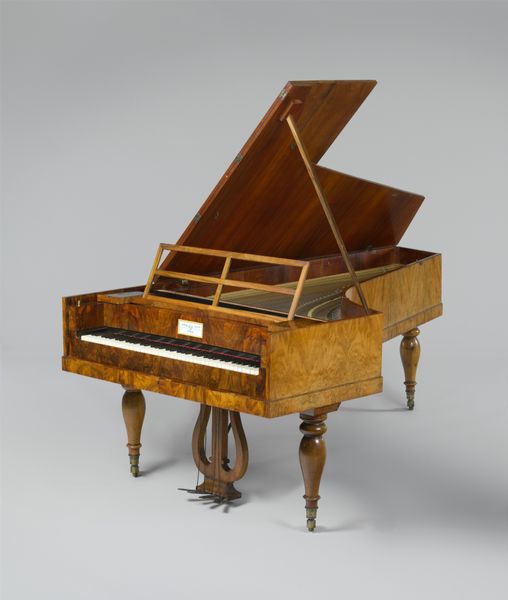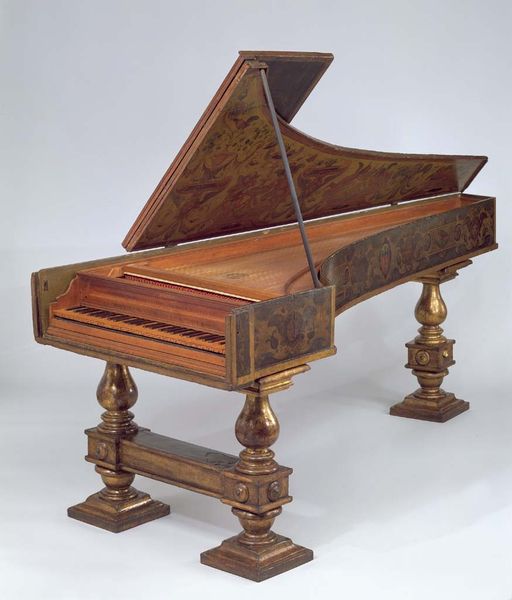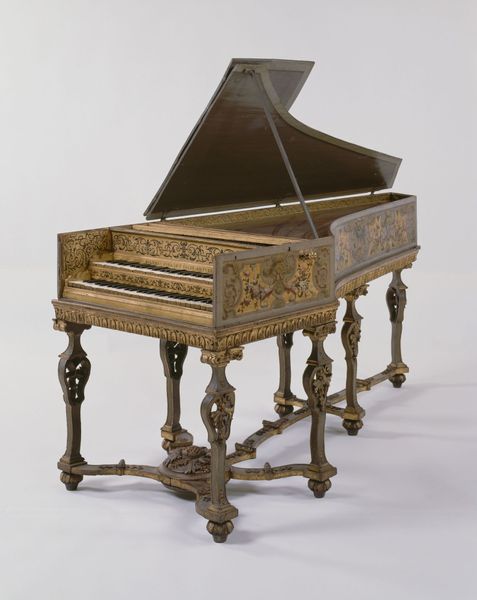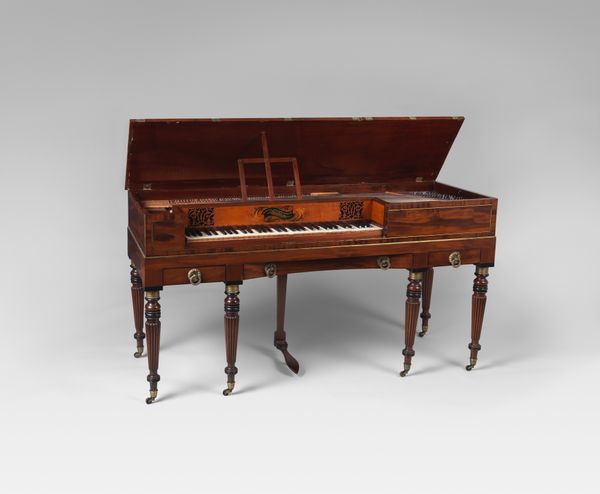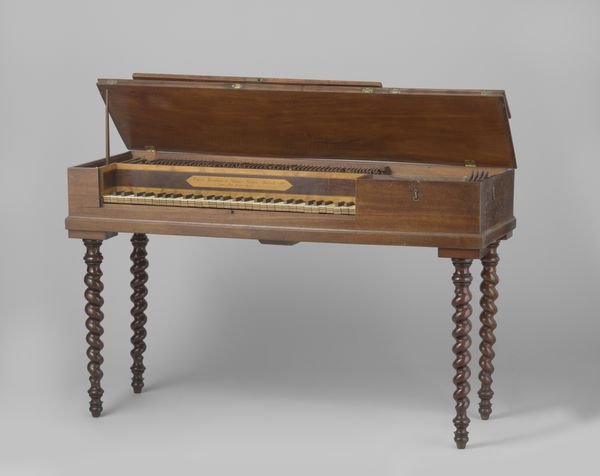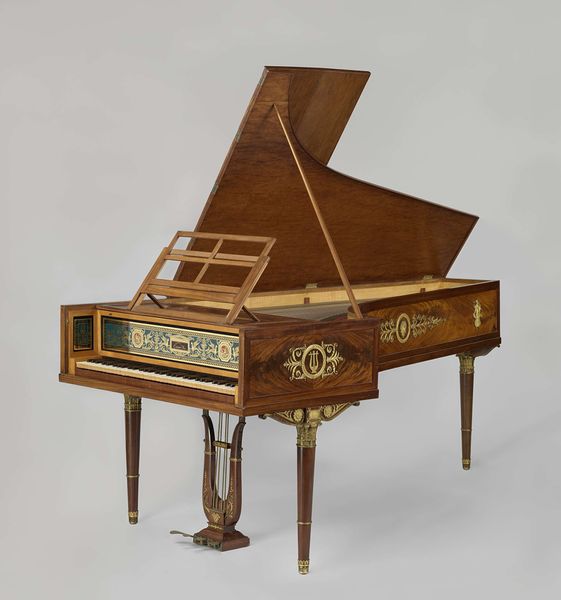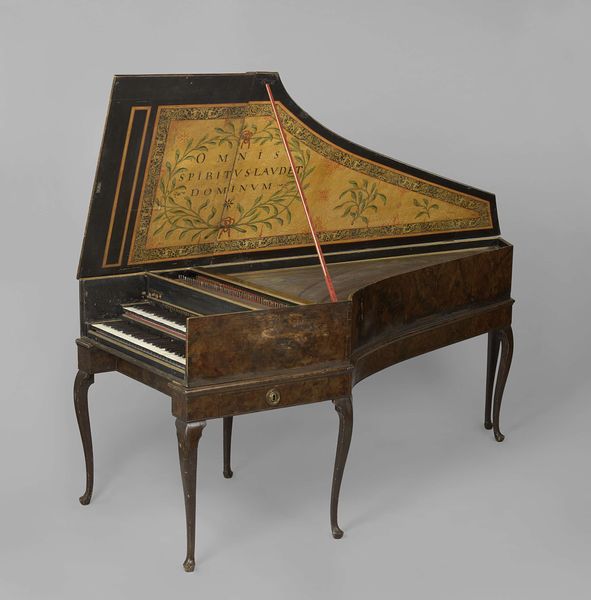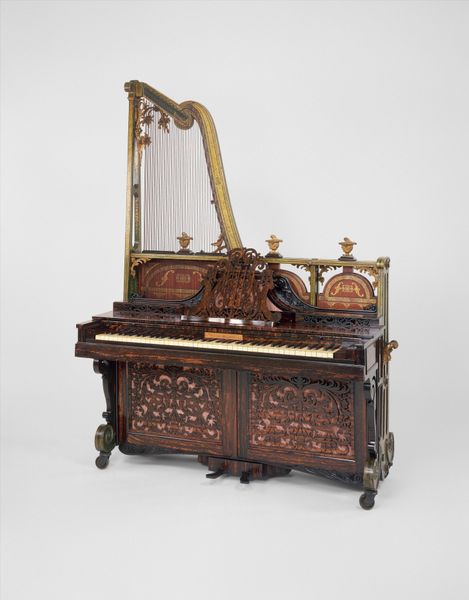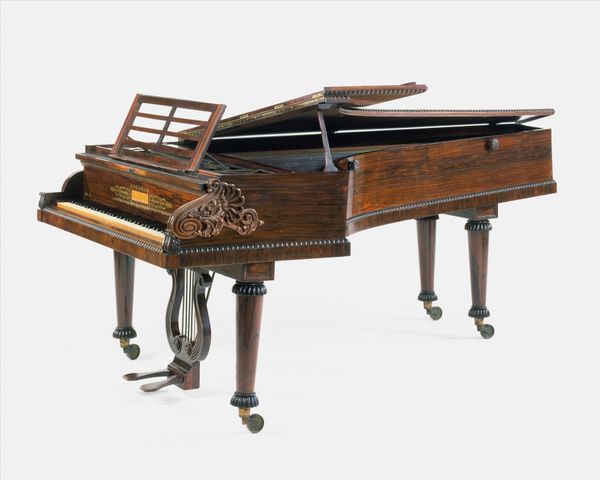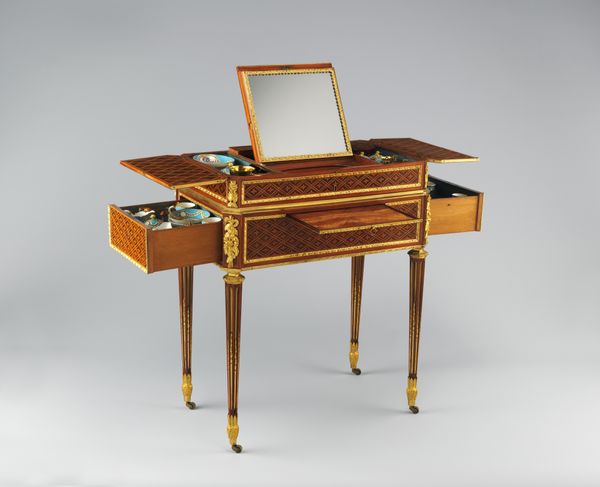
painting, guilding, wood
#
baroque
#
painting
#
guilding
#
france
#
wood
#
musical-instrument
#
decorative-art
Dimensions: L. 243 cm W. 94 cm D. 28 cm Stand: 244cm x 92cm x 69cm
Copyright: Public Domain
Curator: I'm struck immediately by the richness, the opulence! It's visually…delectable. Editor: It is, isn’t it? What we have here is a harpsichord crafted around 1742 by Louis Bellot, a French instrument maker. You'll notice it's not just the form, but the extensive painting and gilding that elevate it beyond mere utility. Curator: Exactly. It’s practically shouting wealth and status. All that gilding coupled with these pastoral scenes feel loaded with meaning. Is it meant to symbolize the harmonic ideal of the time? Editor: I think the iconography does speak to the pursuit of harmony, both musically and socially. Think about the cultural moment. Baroque France placed huge emphasis on artistry as an expression of political power, legitimizing social structures. Musical patronage itself reflected an unequal social contract. Curator: The very fact that this musical instrument exists as a work of art, rather than a functional item, seems to underscore class divisions, suggesting how distant most people were from such artistry or privilege. What's the historical context in terms of who owned this, what was the space in which music was played in relation to shaping elite experience? Editor: Precisely. These instruments weren’t just decorative; they were active agents within complex power dynamics of that era. These types of commissions offered marginalized artisans financial opportunities, so class is visible even in authorship. Then as now, fine artwork often rests on unequal access. The instrument stands now as a reminder of this. Curator: Its purpose in society—its symbolic capital, as Bourdieu would say—dwarfed its function. Looking closely at the symbolism allows us to analyze broader social and political structures through something as intimate and sensual as the act of making music. The harpsichord as a statement of domination. Editor: It’s fascinating to consider how potent symbols, even seemingly decorative ones, can carry a complicated story when you look closely. I find this particular Harpsichord endlessly alluring and visually appealing because it gives a voice to complex histories and allows us to hear an echo of those structures still reverberating.
Comments
No comments
Be the first to comment and join the conversation on the ultimate creative platform.
